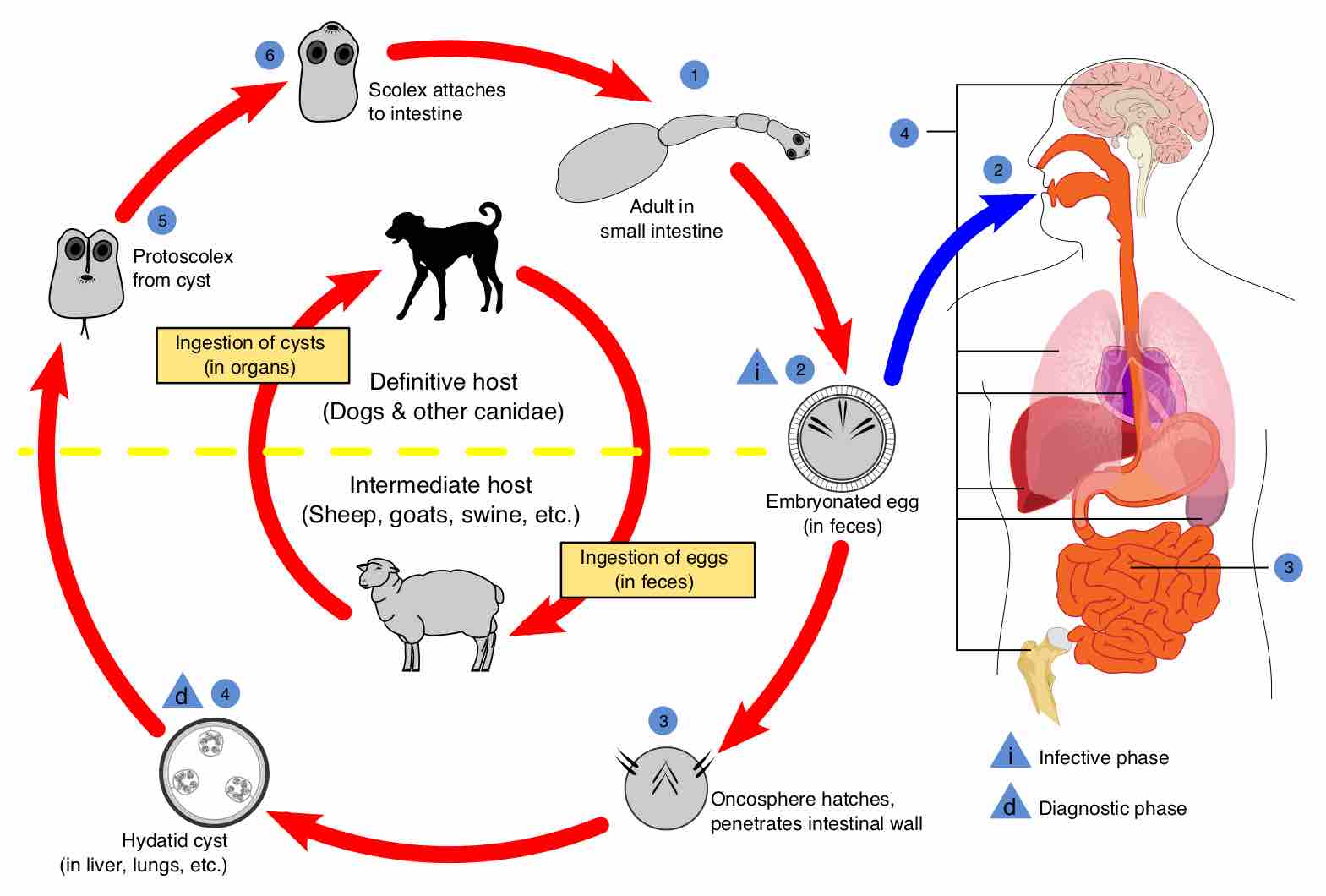Hydatid disease, commonly referred to as echinococcosis, is a result of infection by the tapeworm included in the Echinococcus spp.
Echinococcus multilocularis results in alveolar echinococcosis and Echinococcus vogeli can cause polycystic echinococcosis. In individuals that develop alveolar echinococcosis, which is extremely rare, cysts develop and grow within the alveolar, liver, lungs, and brain. In the cases of alveolar echinococcosis, the parasite responsible, Echinococcus multilocularis, is associated with dogs, cats, wolves and most commonly, foxes, serving as the definitive hosts. The intermediate hosts include small rodents. In individuals that develop polycystic echinococcosis, there is the development of slow growing cysts within the body that exhibit the capability to infiltrate surrounding areas. Cysts are typically found in the liver and in the thorax or abdominal cavity. The parasite responsible for polycystic echinococcosis, Echinococcus vogeli, uses dogs or bush dogs as a definitive host and rodents as an intermediate hosts.
Echinococcus granulosus is a tapeworm found in dogs, who function as the definitive host, as well as sheep, cattle, goats, and pigs who serve as intermediate hosts. Echinococcus granulosus are capable of infecting humans, resulting in hydatid disease, and cause slowly enlarging cysts that develop in vital organs such as the liver or lungs, also referred to as cystic echinococcosis. However, the growth of these cysts are slow and may go unnoticed for a significant duration of time. This form of echinococcosis is more prevalent and commonly found in humans. The adult Echinococcus granulosus targets the small bowel of the definitive hosts and release eggs through the feces. After ingestion by the intermediate hosts, the eggs will hatch and penetrate the intestinal wall. The exiting of the intestinal wall results in circulation of oncospheres that will target various organs, including the liver and lungs. The oncospheres undergo further growth and form cysts. The definitive host will then become infected upon ingestion of the cyst-containing organs of the infected intermediate host. It is within the definitive host that the cyst will develop into the adult stage and the cycle continues and repeats .

Overview of the Echinococcus life cycle
A general overview of the various hosts and steps involved in the life cycle of Echinococcus species.
Hydatid disease is characterized by the growth of these cysts into the adult stage for the tapeworm. Individuals infected with Echinococcus species that develop hydatid disease may not develop symptoms for many years after infection. However, if symptoms develop, it may present in the form of pain or discomfort due to the growing cysts in the upper abdominal regions. Additionally, rupture of fluid within the cysts can result in various medical issues including allergic reactions or death.